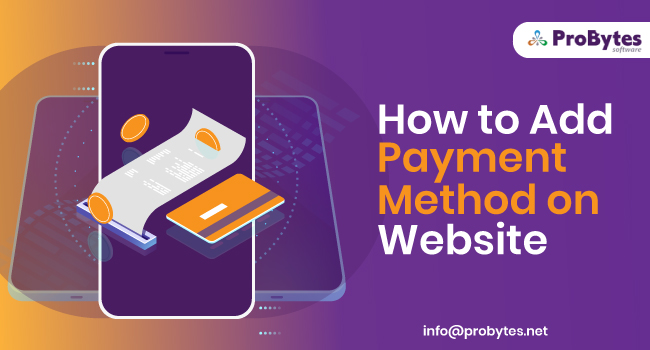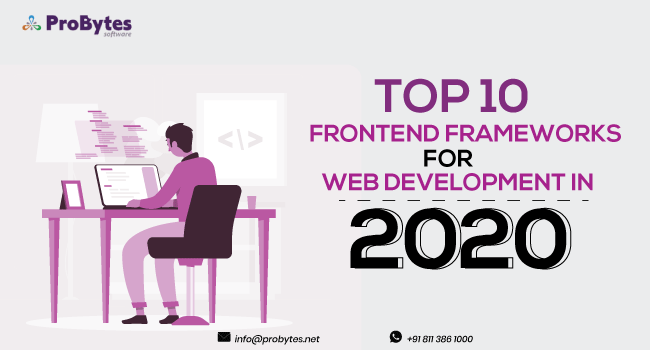Blog Category(283 Blogs)
How to Add Payment Method on Website
In this blog, we will discuss the various payment methods, benefits of integrating payment methods in website, and how to add a payment method on the website.
E-commerce has brought about a sea change not just in marketing, but also in sales processes and business models. The increasing popularity of online stores testifies the fact that this trend is here to stay.
Read Also: 15 Best Online Shopping Websites
And businesses that upgrade themselves and offer online payment options to their customers will be able to grow and expand. If you are planning to set up a website, then go for one designed with payment method and security features integrated.
However, if you already have a website, then you can add a payment method on website. But first, let us see various types of payment methods you can integrate into your website.
Types of Online Payment Methods
for Websites
The different types of payment options that you can integrate in your website are:
- Credit cards
- Debit Cards
- Bank Transfers
- EWallets
- Mobile payments
- PayPal
- Cash on Delivery

You can choose to integrate all these payment methods or just the ones that are most popular in your region and among your intended audience. For example, if the majority of your target audience is college students or young people, then it would be a good idea to have mobile payments and Ewallets rather than credit cards or PayPal.
However, if your target audience consists mostly of earning members and professionals, payment options such as card payments or bank transfers will be preferable.
What are the benefits of integrating payment methods on a website?
One of the biggest advantages of having payment methods on the website is increased sales. You can instantly generate the invoice and accept payment from your customer.
This method allows customers to shop comfortably anytime and anywhere. Also, a smooth online transaction improves user experience and encourages them to keep coming back to your website. Moreover, setting up a payment method on a website is simple and easy.
You can set up the payment method with zero installation fees. The transaction fee setting up and using online payment services is economical. So, you get good value for your money.
Having online invoice generating software and quickly managing the refund enhance your website’s popularity and in turn your profit margins. The online payment method can also be customized to accept regular subscriptions. The best part is that online payment support helps you make the most of impulse purchases.
Documents required for Adding Payment Method on Website
- Certificate of company registration or incorporation
- Articles of Association and Memorandum of Association
- In case of LLP, partnership deed
- PAN card of the company
- Bank account details
Apart from the documents listed above, certain payment gateway service providers may ask for other relevant documents and certificates.
How to Add Payment Method on Website?
1. Evaluate payment gateway services offered by your web host
The first step you need to do before integrating a payment method on your website is to evaluate the kind of payment support your web host offers. You can find this detail in the control panel or admin panel of the web host.
Read Also: How Much Does it Cost to Build an Ecommerce Website?
Many hosting providers offer payment services integration as a part of their service pack, while others charge you separately for it.
The top web hosts for payment services are Bluehost, A2 Hosting, InMotion Hosting, GreenGeeks, GoDaddy, Wix, SquareSpace, and FatCow.
2. Choose a Payment Gateway
There are two types of payment gateways – hosted and non-hosted payment gateways. A hosted gateway takes your customer away from your website to another secure site to get the payment and then redirects the user back to your website.
A non-hosted payment gateway, on the other hand, has APIs and modules that can be integrated into your website. The payment transaction happens on your website itself.
However, as customer bank, card and other personal information will be stored on your website, you need to ensure that it is 100% secure and safe from cyber threats and hacks. Also, non-hosting gateways are more expensive than hosted gateways.
Hosted Payment Gateways
- PayPal
- Amazon Pay
- Stripe
- SagePay
Non-hosted Payment Gateways
- Authorize.net
- SagePay Direct Integration
- MangoPay
3. Check and compare details of setup, transaction and other fees details
Whether you choose to go for hosted or non-hosted payment gateways, you need to compare the fees they charge for the services. Apart from the setup and integration fee, you may have to pay for every transaction, even refunds.
Also, there could be subscriptions, renewals, and special fees for security features. Once you’ve explored the features, the services and the pricing, decide on one that best suits your business model.
4. Add Payment Methods
You can integrate the payment gateway to your website with the support of the web host provider. This integration option will be available in the admin page or control panel.
You can choose any of the payment methods described above. Once you add the payment methods, use Test or Sandbox account to check if the payment gateway is working fine and the transactions are preceding without any problem.
5. Create a merchant account
After you have set up the payment gateway, you need to create a merchant account and link the payment services with it. The merchant account deposits the payment from the customer directly to your company’s bank account.
Merchant accounts are backed by FDIC and come with fraud protection. Also, you can control the transaction of payment between your website and the merchant account. However, you need to look out for hidden fees and cost acquired for approving debit and credit card payments.
Read Also: 15 Best Content Management Systems
Do you want to add payment gateway on a website and are feeling overwhelmed by these processes? Don’t worry about these technical details. We have expert professionals who can take care of the entire web development process. Contact us for a consultation.

 Python
Python Magento
Magento Odoo
Odoo How To
How To How Much
How Much Yii Development
Yii Development Core PHP
Core PHP Prestashop
Prestashop Latest News
Latest News Education
Education Web Design
Web Design Business
Business Ecommerce
Ecommerce Travel
Travel Banking and Finance
Banking and Finance Web Development
Web Development Ruby On Rails
Ruby On Rails Joomla Development
Joomla Development Ecommerce
Ecommerce Magento Development Services
Magento Development Services Hire a Developer
Hire a Developer Web Crawling Services
Web Crawling Services












